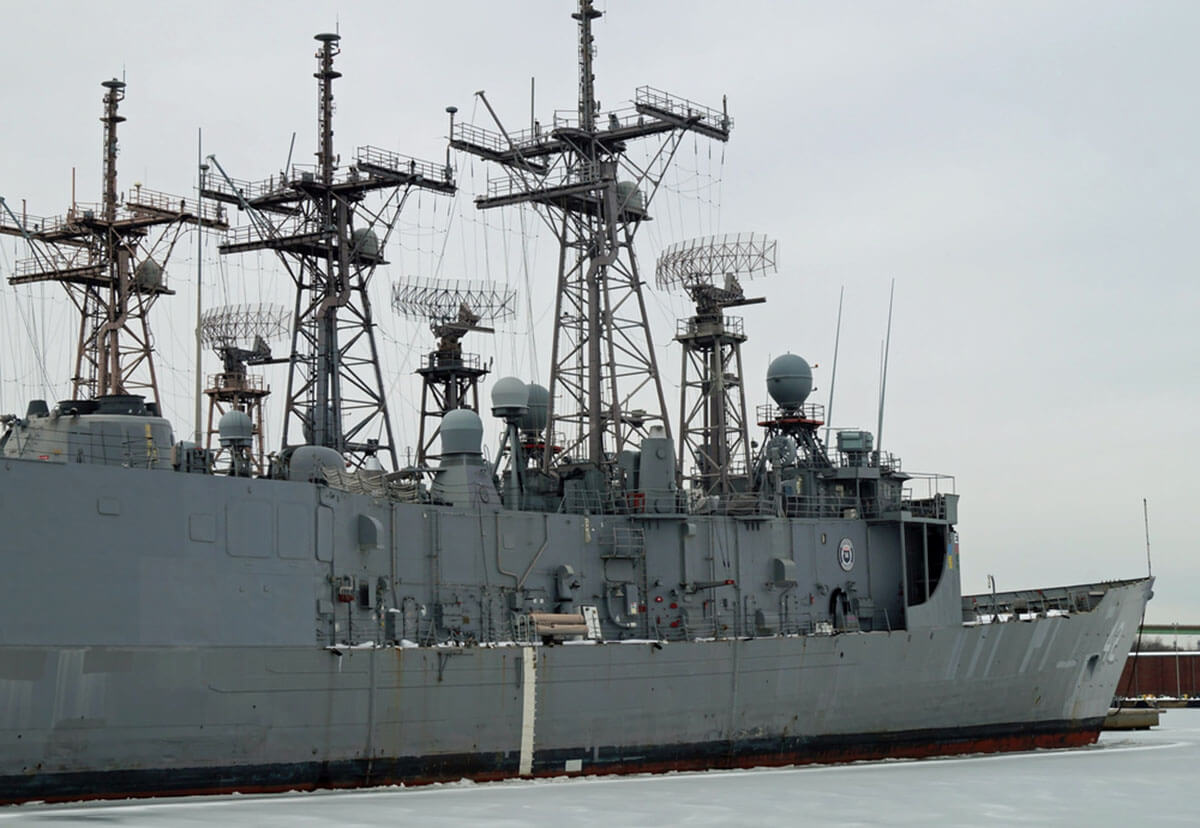The Philadelphia Naval Shipyard

Even before the state of Pennsylvania was established in 1787, the area now known as Philadelphia had a long history of shipbuilding. In 1799, the Philadelphia Naval Shipyard was established as the first Naval Shipyard. The yard served U.S. interests through many wars before it ceased operations in the 1990s.
Veterans and civilians who used to work at the Philadelphia Naval Shipyard may have been exposed to dangerous asbestos materials, which can cause mesothelioma and other serious diseases. The nationally recognized mesothelioma attorneys at Belluck & Fox have secured millions of dollars in compensation for Navy shipyard workers and their families. Contact us to schedule a free consultation on your case today.
History of Philadelphia Naval Shipyard
In the 1640s, Swedish boat builders were operating in the area where Philadelphia is now located. Larger-scale shipbuilding efforts began upon the establishment of Pennsylvania, when skilled artisans were employed after escaping the religious persecution they were suffering in Britain.
William Penn, prior to establishing Philadelphia, assisted shipwright James West to start a small shipyard in 1676 on the Delaware Riverfront. More artisans were recruited, coming from Wales, Ireland, Scotland, as well as English Quakers who were skilled shipbuilders. During this period, shipbuilding was a major industry due to a great abundance of the necessary natural resources, such as oak for masts, pine, and pine tar, which was used as caulking on wooden sailing ships of the era.
Local shipbuilding had become necessary as trade expanded, and there was a growing need to facilitate the export of various products to Europe, Africa, and the West Indies. The locally built ships were cheaper for merchants and, in many cases, better in quality than those that could be purchased from British shipbuilding companies.
Shipbuilding continued to be a major industry in Philadelphia during the colonial era, and master shipbuilders and carpenters built both coastal sailing ships and brigantines (two-masted sailing vessels). In the 1760s, trouble was brewing with Britain, and Philadelphia was the center of a Continental Congress that needed naval defense. Small amounts of money were raised to build gunboats to defend the city and the river, stimulating more shipbuilding of gunboats, floating batteries, and faster frigates (which were the model for the U.S. Navy’s 44-gun frigates, several of which were built in Philadelphia).
In 1778, the British occupied Philadelphia, burned frigates, and sunk gunboats. Shipyards up and down the river were closed. After the British evacuated the area, shipbuilders returned to work, constructing various warships for the Revolutionary forces.
The Philadelphia Naval Shipyard was established in 1799 when the U.S. Congress approved $522,678 for the purchase of the original site. It was first located in the Southwark region, but as the city grew, it was relocated to League Island, Pa., where the Delaware River and the Schuylkill River meet. It continued in operation until 1996. The shipyard was primarily engaged in the construction and conversion of ships.
During the Civil War, the shipyard was the most southern of the Navy yards, but it never fell under control of the Confederacy.
During WWII, the Philadelphia Naval Shipyard launched the battleship U.S.S. Wisconsin, the U.S. Antietam, and two cruisers, the U.S.S. Los Angeles and the U.S.S. Chicago, over a seven-month period.
The last ship built at the shipyard was the U.S.S. Blue Ridge, completed in 1970. Subsequently, the shipyard workers were engaged in repairing and overhauling Navy ships, with a range of services, including electronics and combat system upgrading. The Navy’s Service Life Extension Program was established to modernize and refit the Navy’s eight aircraft carriers, and these duties were more than half of the work performed during this era, allowing these carriers to be upgraded to become compatible with the modern cruisers (Aegis). Prior to its closure, the shipyard employed about 7,000 employees.
Asbestos Exposure at Philadelphia Naval Shipyard
Asbestos was used on the ships built and repaired at the yard. When ships were being constructed and overhauled in Philadelphia, asbestos-containing equipment such as boilers, turbines, pumps, and valves was installed and repaired. The yard also had numerous shops where asbestos-containing equipment was repaired. Thousands of civilian employees and Navy veterans were exposed to asbestos at the Philadelphia Navy Yard.
Many occupations were at risk for exposure, but several types of workers in particular were at risk:
- Electricians
- Pipefitters
- Boilermakers
- Equipment and automotive mechanics
- Pipe coverers and insulators
- Plumbers
- Welders
Asbestos disease can take decades to develop. So workers who were exposed years ago continue to be diagnosed with mesothelioma, lung cancer, or asbestosis.
Belluck & Fox Fights for the Rights of Shipyard Workers
If you or a loved one worked at Philadelphia Navy Shipyard and have been diagnosed with mesothelioma, contact Belluck & Fox today. Our skilled legal team has helped many yard workers and their families recover significant compensation for asbestos diseases, and we are here to help you, too.
Learn how Belluck & Fox protects the legal rights of Navy yard workers by scheduling a free case review.
Source:
Encyclopedia of Greater Philadelphia: Shipbuilding and Shipyards
